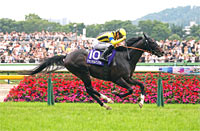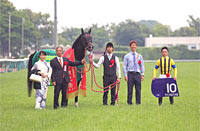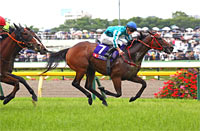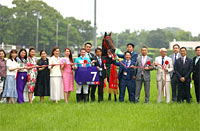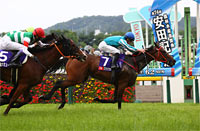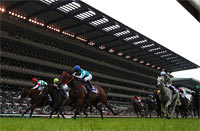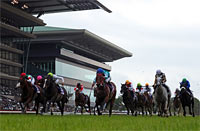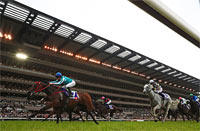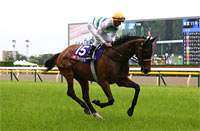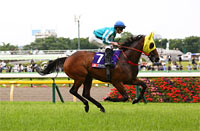2015 News
Data Analysis for the "2015 Yasuda Kinen (G1)"Traditional G1 mile race contested by world’s top-level heavyweights Just a Way, winner of the Yasuda Kinen in 2014, had also won his previous race, the Dubai Duty Free (United Arab Emirates). The previous winner Lord Kanaloa had gone one better, with successive wins in the 2012 and 2013 Hong Kong Sprint (Hong Kong). In fact, a list of Yasuda Kinen winners (including three foreign-trained horses) is like a roll call of famous horses with known form on the international stage. This time, let’s analyze some statistics shared by successful horses in this race from results over the last 10 years. Previous race: Check the finish and race grade Of the last 10 winners, all except Strong Return in 2012 had finished “In the top 3” in their previous outing. This race seems to suit horses with high-placed finishes in their previous race. [Table 1] [Table 1] Performance by finish in previous race (last 10 years)
What’s more, runners finishing “in the top 3” last time out have achieved superior success ratios, with a top 3 ratio of 32.3%, when that race was a “G1 race (including overseas races)”. Conversely, when the previous race was anything other than “G1 or G2”, performances have been poor, including a top 3 ratio of only 7.7%. When comparing runners with a top 3 finish last time out, we ought to favor those coming straight from higher-grade races. [Table 2] [Table 2] Performance of “top 3” finishers in the previous race, by the condition of that race (last 10 years)
Meanwhile, of runners finishing “4th or lower” last time out, those with no experience of a top 2 finish in a G1 turf race at Tokyo have performed even more poorly, with a top 3 ratio of only 3.3%. We should perhaps lower our expectations of horses beaten to “4th or lower” in their previous race and with no experience of a top 2 finish in a G1 turf race at Tokyo (like this one). [Table 3] [Table 3] Performance of horses finishing “4th or lower” in their previous race, by experience of a top 2 finish in a G1 turf race at Tokyo (last 10 years)
Positioning in the previous race is a key point Of all the runners over the last 10 years, those previously contesting a JRA race and passing the final turn in “3rd or higher” position in that race have struggled here, with a top 3 ratio of 8.3%. Incidentally, of a total of 36 runners fitting this description, five had been backed among the top 2 favorites, but all have been beaten to 4th or lower. It seems we should be wary of overconfidence in front runners. [Table 4] [Table 4] Performance by finish in last-but-one race (last 10 years)
On the other hand, of all the runners over the last 10 years most recently seen in a JRA race, those marking one of the “top 2” final three furlong times (estimated) among the runners in that race have achieved superior success ratios here, with a top 3 ratio of 30.4%. When comparing the progression of the previous race, our focus should be on the “speed of the final spurt”. [Table 5] [Table 5] Performance by ranking in final 3 furlong times (estimated) in the last race when it was a JRA race (last 10 years)
Horses with a track record in counterclockwise G1 races perform well recently Of twelve top 3 finishers over the last 4 years, eight already had experience of a top 3 finish in a G1 race held on a JRA counterclockwise course (excluding races for fillies and mares only). By contrast, horses without this experience have provided no winners and achieved a top 3 ratio of only 9.5%. If recent trends are anything to go by, we should expect more of runners with experience of a high placing in a mixed G1 race held on a counterclockwise course, like this one. [Table 6] [Table 6] Performance by experience of a top 3 finish in a mixed G1 race held on a JRA counterclockwise course (last 4 years)
Seek out the winners! All of the last 4 winners had most recently appeared in a race held on a counterclockwise course, and had finished 4th or higher in that race. Another point common to these four is that they had all experienced a top 3 finish in a G1 race (excluding races for fillies and mares only) held on a JRA counterclockwise course. We should perhaps lower our expectations of horses last seen on clockwise courses, or those with no experience of a good performance in big races held on a counterclockwise course. [Table 7] [Table 7] Winners’ previous race venue, finish in previous race, and highest finish in a mixed G1 race held on a JRA counterclockwise course (last 4 years)
(Data analysis by Masaya Ibuki) |
|














